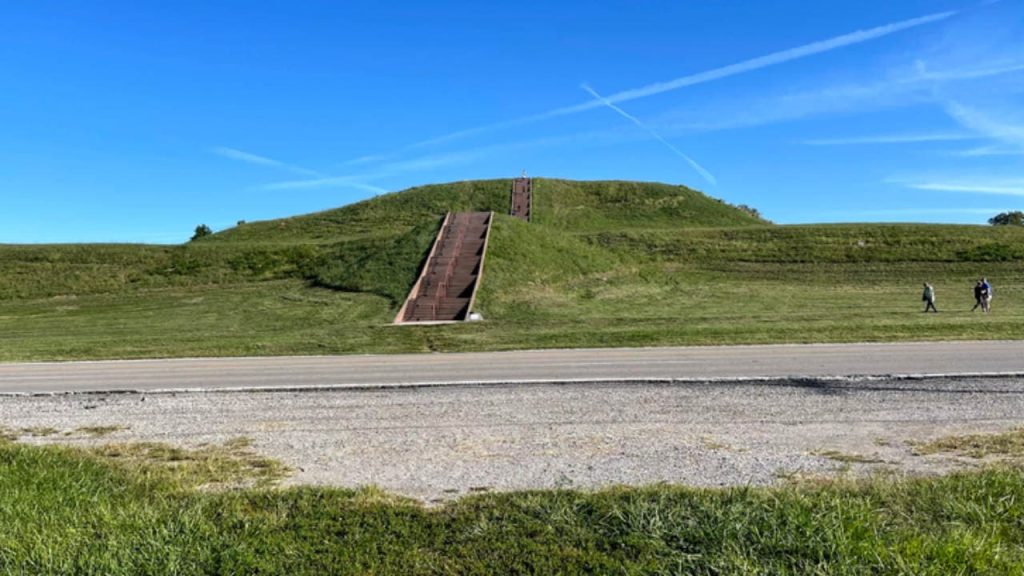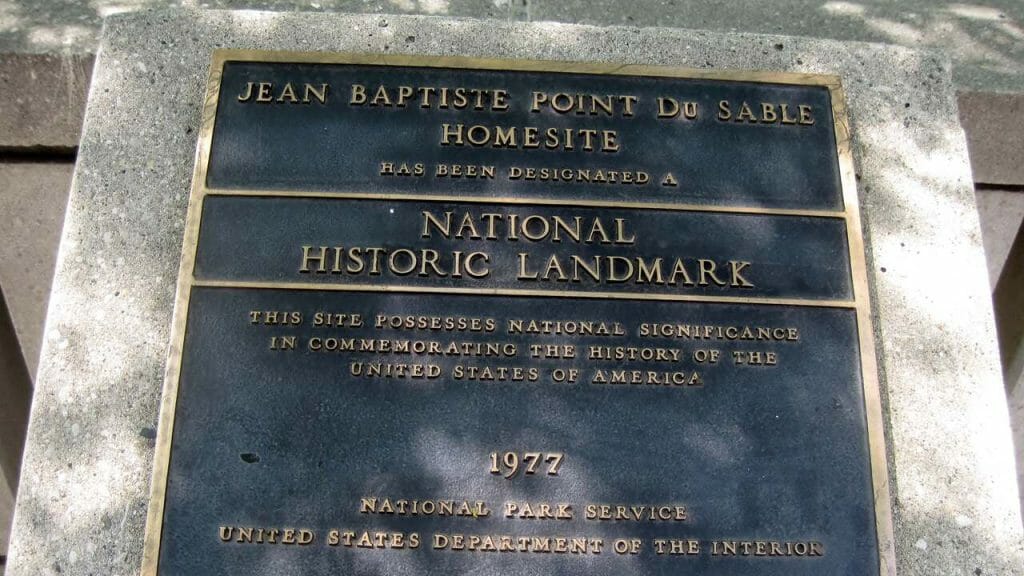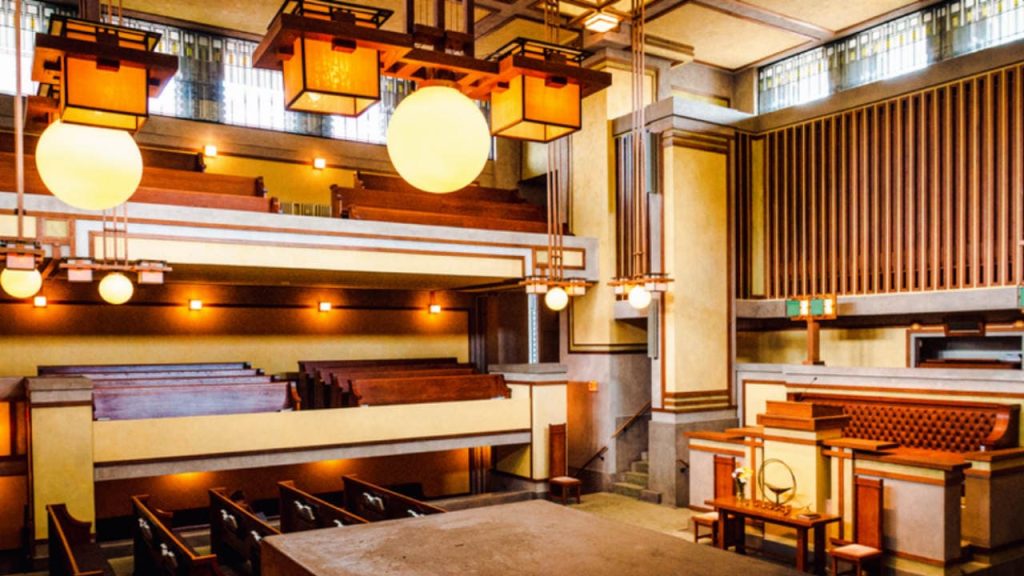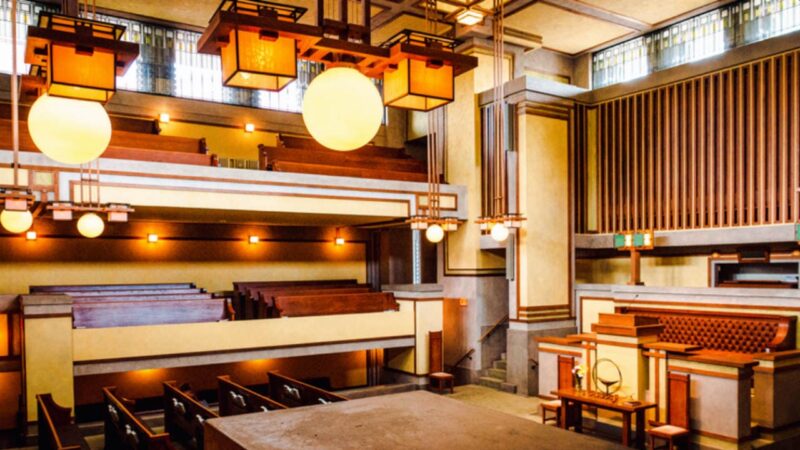Even though Illinois is not a very ancient state, a great deal of history can be found there. In Illinois, there are a lot of different historical places that might help you feel more connected to the past. For everyone with an interest in history, these places are the must-visit attractions.
So without further ado, let’s jump into discovering some of the best historical sites in Illinois.
1. Cahokia Mounds, Collinsville

The top historical site in Illinois, Cahokia Mounds, where 2,200 acres of restored ancient culture can be found. In AD 1250, a highly advanced native town was established here that was bigger than London.
In this location, one of the most advanced cultures ever lived. Collinsville has opened its doors to visitors who want to learn more about an ancient culture.
2. Jean Baptiste Point Du Sable Homesite, Chicago

The Jean Baptiste Point Du Sable Homesite in Chicago is the city’s first permanent dwelling (not including native settlements). This second top historical site in Illinois on my list has been a National Historic Landmark since 1976.
3. Old State Capitol, Springfield

The architecture of this ancient structure is influenced by the Greek Revival style, and it has a long and interesting history. It is also a treasured site since it served as the former state capital during Abraham Lincoln’s time. Though it was reconstructed and renovated, the edifice is still a major draw for visitors.
You might also like to visit these famous landmarks in Illinois.
4. Unity Temple, Oak Park

Frank Lloyd Wright designed the Unity Temple in Oak Park in 1908. A group of architects believes this building to be the first modern construction of that time period. Visitors may now marvel at this beautifully lighted concrete oasis.
Wright’s involvement with the Unity Temple was more than simply a job for him; he was also a member of the Oak Park Unitarian Church. By abandoning New England Unitarian, white-strung architectural style, Wright was making the church a place where man may practice religion.
5. Rock Island Arsenal, Rock Island
National Historic Landmark Rock Island Arsenal, the United States’ biggest government-owned weapon production facility, is a treasure trove of history. More than 12,000 Confederate troops were imprisoned there between 1863 and 1865.
Tourists may still visit the Rock Island National Cemetery and the Confederate Cemetery despite the fact that the jail was entirely demolished.
6. Abraham Lincoln Home, Springfield
It is the sixth-best historical site in Illinois. Today, the 12-room mansion in Springfield, Illinois, still looks precisely the same when Abraham Lincoln and his wife moved in more than 150 years ago.
Learn more about the best places to visit in Illinois.
7. Modoc Rock Shelter, Modoc
Located on the banks of the Mississippi River, the Modoc Rock Shelter is a national historic landmark. Prehistoric artifacts have been preserved in the silt of this granite cliff, which rises to a height of 28 feet. Archaeologists think that hunting parties and families utilized this site for both short-term and long-term camps up to 9,000 years ago.
8. Arthur H. Compton House, Chicago
Located in Chicago, the Arthur H. Compton House was the house of the professor who discovered the Compton Effect (that light is both a wave and a particle has been shown by this finding).
For his work in physics, Compton was awarded the Nobel Prize in 1927. As a result, the Arthur H. Compton House has been designated a National Historic Landmark.
9. Fort De Chartres, Prairie Du Rocher
The limestone Fort De Chartres on the Mississippi River’s east bank dates all the way back to 1790. One of three “de Chartres” forts that the French erected throughout their eighteenth-century colonialism in what is now Illinois may be found at this location, about four miles west of Prairie du Rocher. It was repaired multiple times due to floods.
10. Clarence F. Buckingham Memorial Fountain, Chicago
The Buckingham Fountain is one of the world’s biggest fountains and is located in Grant Park. For 20 minutes every hour, it creates a water show that shoots water 150 feet into the air. The Buckingham Fountain, a gift from Kate S. Buckingham in memory of her brother Clarence, is widely regarded as one of the country’s greatest decorative fountains.
11. Kincaid Mounds Site, Massac County
The Archaic Era (8000-2000 BC) (pre-pottery period) is represented by the Kincaid Mounds, which were built by an ancient Native American civilization during this time period.
On top of massive mounds, the inhabitants of that period constructed massive structures, presumably temples or council houses, and sculpted figures from coal and fluorite. The National Historic Landmark status of this region was established in 1964.
12. Mazon Creek Fossil Beds, Grundy County
The Mazon Creek Fossil Beds in Grundy County, Illinois, is a great place to see fossils that were generated 300 million years ago. Since its designation as a National Historic Landmark in 1997, this amazing site has preserved fossils in ironstone concretions.
13. Holy Family Catholic Church, Cahokia
Last but not least, located in Cahokia, Illinois, Holy Family Catholic Church is the United States’s oldest Catholic parish. The Log Church is made entirely of black walnut timbers, and was founded in 1699. It is the oldest historic church west of the Alleghany Mountains which is still in existence.
Make a stop in Illinois this summer to see some of the state’s most notable historical sites and see the places whose history you have read only in record books. Also, chances are good that you’ll be able to get a good selfie.

